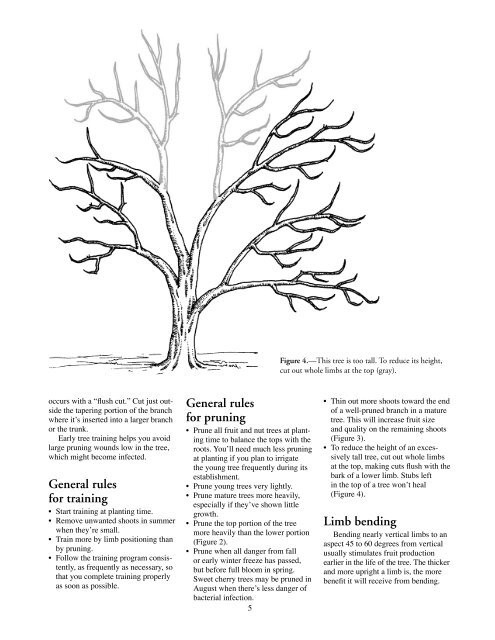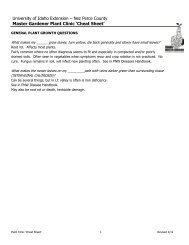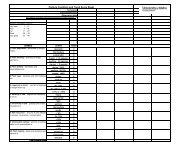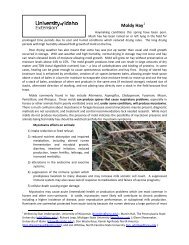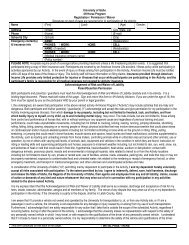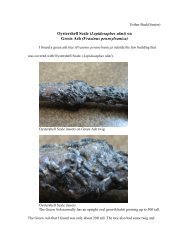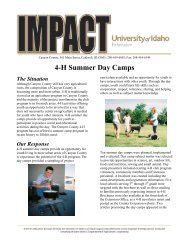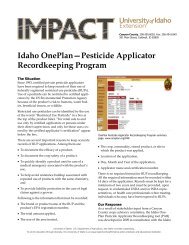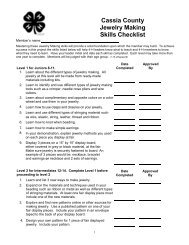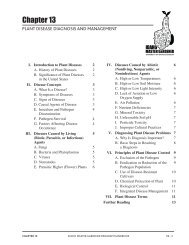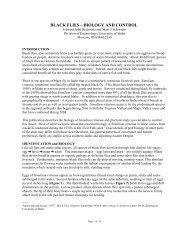Training and Pruning Your Home Orchard, PNW 400 (Oregon State ...
Training and Pruning Your Home Orchard, PNW 400 (Oregon State ...
Training and Pruning Your Home Orchard, PNW 400 (Oregon State ...
You also want an ePaper? Increase the reach of your titles
YUMPU automatically turns print PDFs into web optimized ePapers that Google loves.
Figure 4.—This tree is too tall. To reduce its height,<br />
cut out whole limbs at the top (gray).<br />
occurs with a “flush cut.” Cut just outside<br />
the tapering portion of the branch<br />
where it’s inserted into a larger branch<br />
or the trunk.<br />
Early tree training helps you avoid<br />
large pruning wounds low in the tree,<br />
which might become infected.<br />
General rules<br />
for training<br />
• Start training at planting time.<br />
• Remove unwanted shoots in summer<br />
when they’re small.<br />
• Train more by limb positioning than<br />
by pruning.<br />
• Follow the training program consistently,<br />
as frequently as necessary, so<br />
that you complete training properly<br />
as soon as possible.<br />
General rules<br />
for pruning<br />
• Prune all fruit <strong>and</strong> nut trees at planting<br />
time to balance the tops with the<br />
roots. You’ll need much less pruning<br />
at planting if you plan to irrigate<br />
the young tree frequently during its<br />
establishment.<br />
• Prune young trees very lightly.<br />
• Prune mature trees more heavily,<br />
especially if they’ve shown little<br />
growth.<br />
• Prune the top portion of the tree<br />
more heavily than the lower portion<br />
(Figure 2).<br />
• Prune when all danger from fall<br />
or early winter freeze has passed,<br />
but before full bloom in spring.<br />
Sweet cherry trees may be pruned in<br />
August when there’s less danger of<br />
bacterial infection.<br />
<br />
• Thin out more shoots toward the end<br />
of a well‐pruned branch in a mature<br />
tree. This will increase fruit size<br />
<strong>and</strong> quality on the remaining shoots<br />
(Figure 3).<br />
• To reduce the height of an excessively<br />
tall tree, cut out whole limbs<br />
at the top, making cuts flush with the<br />
bark of a lower limb. Stubs left<br />
in the top of a tree won’t heal<br />
(Figure 4).<br />
Limb bending<br />
Bending nearly vertical limbs to an<br />
aspect 45 to 60 degrees from vertical<br />
usually stimulates fruit production<br />
earlier in the life of the tree. The thicker<br />
<strong>and</strong> more upright a limb is, the more<br />
benefit it will receive from bending.


